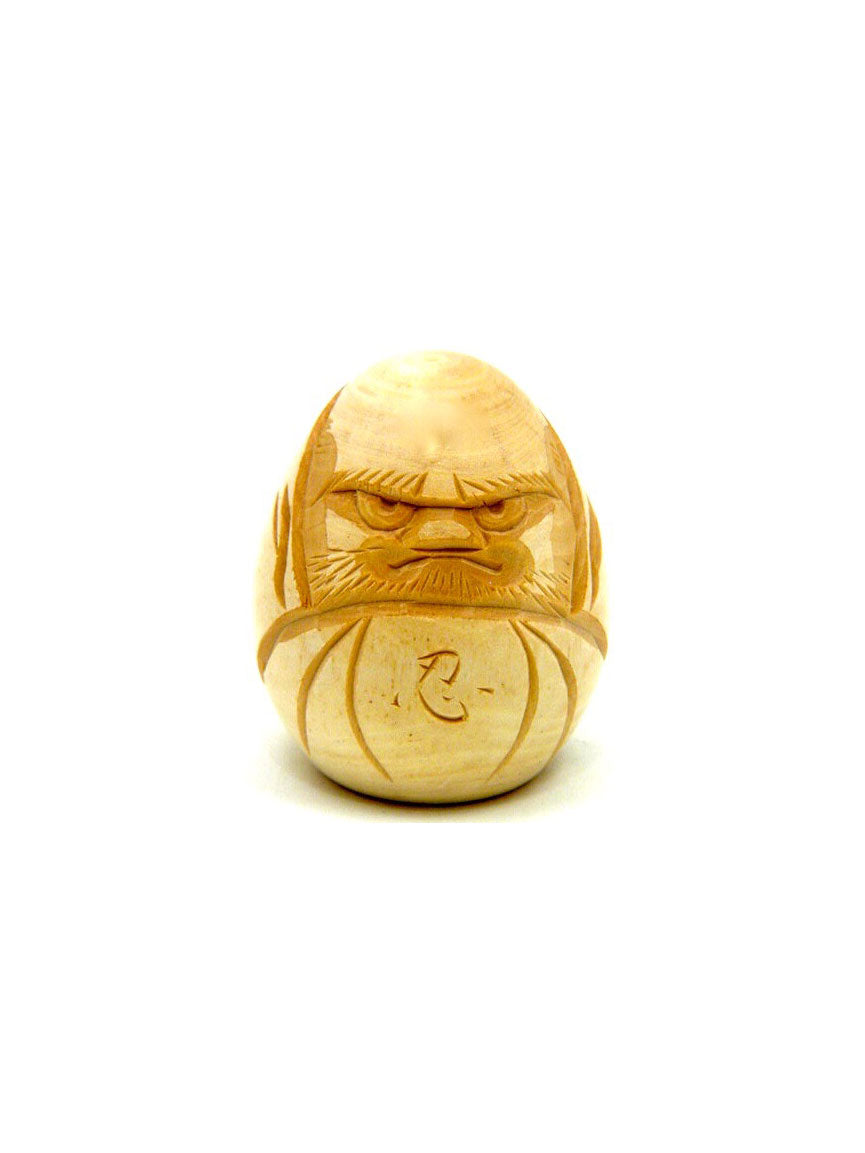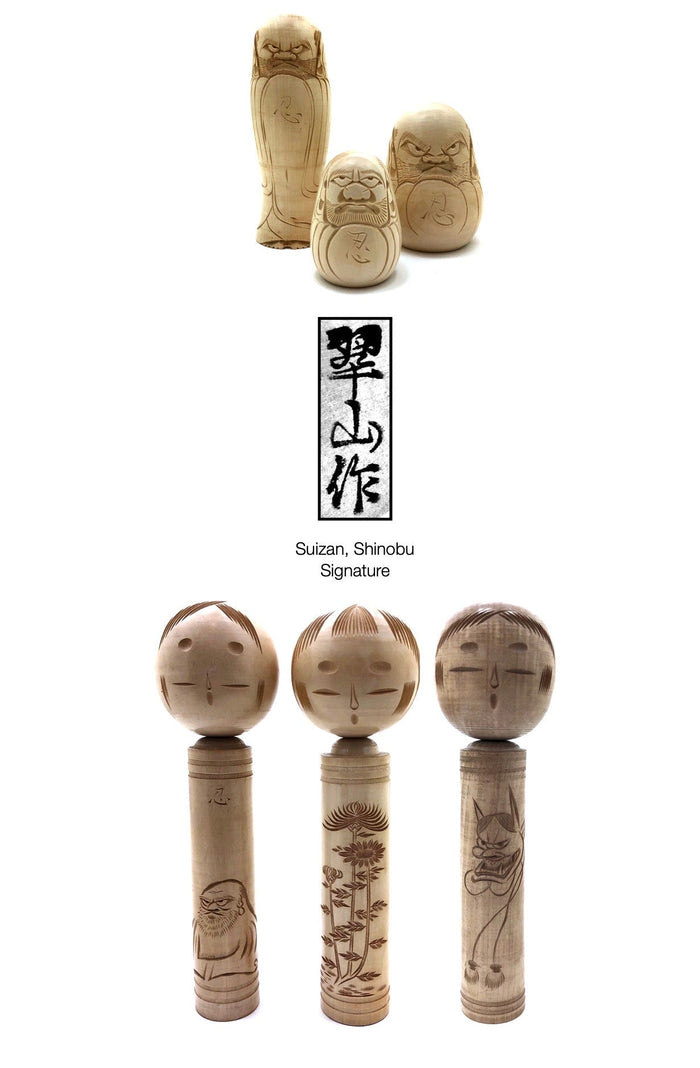
“Daruma | Folk Deity”
Dimensions: 3-0” h
This figure is executed in dogwood and carved to support the Daruma motif. One is the standing type wearing the typical robe and the other is a seated version of this beloved figure. It is carved with the kanji for ‘Patience’, and the form of the robe give life to each piece. The doll is signed on the bottom.
Vintage Condition: “as is” with some scattered light wear or stain that does not affect the design, and retains the original craft/workmanship. Any discoloration, chipping/cracking, surface wear or structural damage noted.

Artisan
Woodworker: Suizan, Shinobu (Yokusan, Shizan)
Biographical History:
Creative Kokeshi Transitional artist Suizan is known to be from the Tohoku region, but there is no other information found on this artist. Some of his Kokeshi are similar to the Traditional Tougatta-style dolls. His style of carving is called Harusame-bori. As collectors, we felt it was most important to represent all Sosaku Kokeshi artists, whether or not each artist has a written account of his/her life. We show the diversity of cultural values and the creative work produced by a multitude of artists.
In researching old writings through articles and books that remain, it is evident that the Kokeshi Craftsperson not only created beautiful forms as toys, but also kept alive cultural values, customs, and fashion through the extensive representations of Kokeshi dolls. The beauty is in the doll and not the signatures, for most masters never signed their dolls. Later they named the dolls, but only when Westerners insisted on signatures because they did not know the artists, so the carvers began to sign their works, for the carvers wanted to promote sales to make a living, during the seasons that did not provide an environment to continue their otherwise daily work.
Collector's note – descriptive qualities, standard characteristics & ornamentation styles:
Separating the subject from the background gives solidity and definition, which supports the carving on his lathe-turned dolls. Suizan works only in Kabanoki, (Birch) or Mizuki, (Dogwood), and never paints any of his dolls. Images range from Noh theatre images, Daruma, (folk diety), the devil, chrysanthemum, and autumn flowers. He often carves the kanji for ‘Patience” into his pieces. He is a unique artist whose work is unusual and seldom seen, and is one of only three artists who do not paint their dolls.
Explore & Learn More about Woodworker: Suizan, Shinobu (Yokusan, Shizan)